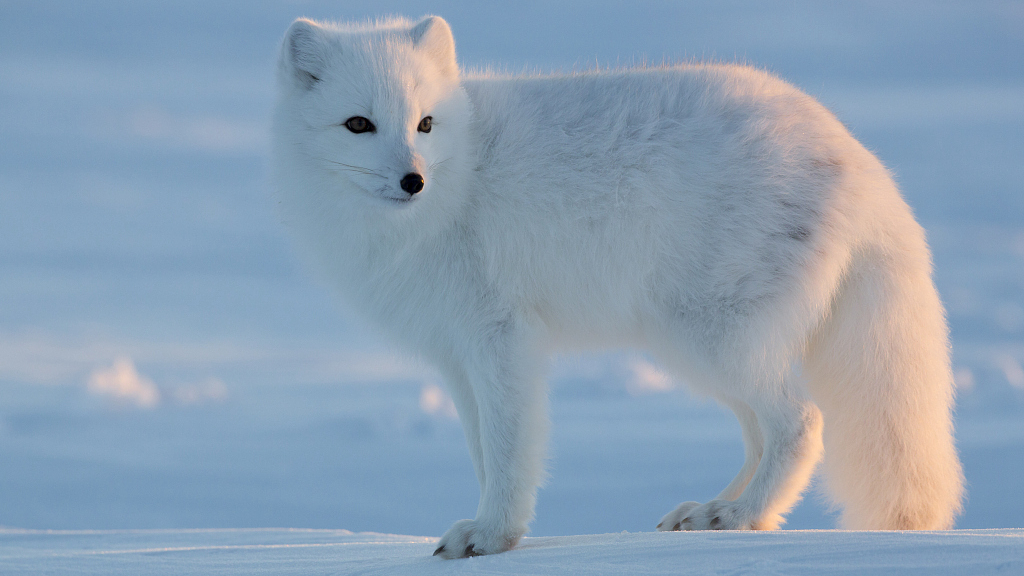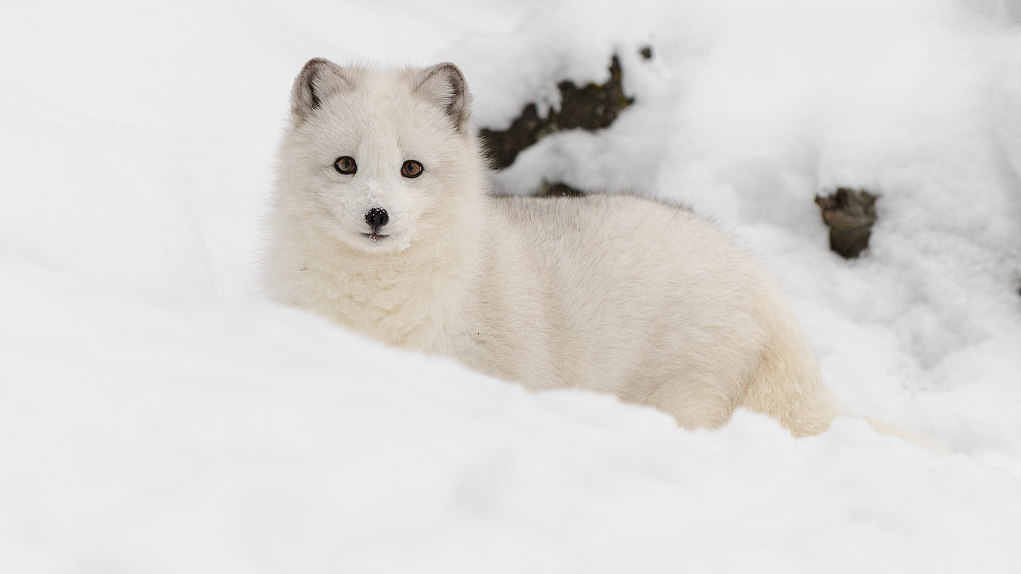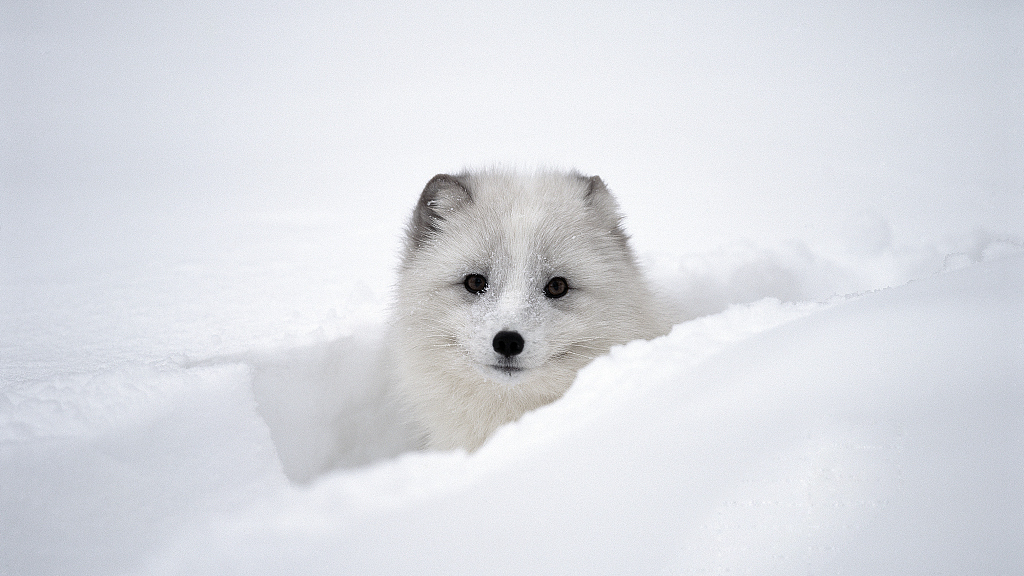Arctic foxes can endure extremely cold environments with temperatures as low as minus 50 degrees Celsius. Some of them can even survive minus 70 degrees Celsius. What is their secret behind withstanding such extreme environments?

An Arctic fox uses its tail as a blanket to cover its body while sleeping. /VCG Photo
An Arctic fox uses its tail as a blanket to cover its body while sleeping. /VCG Photo
Thick fur definitely helps them stay warm. Unlike their thin summer coat, Arctic foxes start to put on their thick white coat as winter comes. Their entire bodies, even the paws, get covered in thick fur, which insulates them from coldness. When they are sleeping, their tail can act as a blanket to cover their bodies.

Arctic foxes have fur on their paws to stay warm. /VCG Photo
Arctic foxes have fur on their paws to stay warm. /VCG Photo

Arctic foxes start to put on their thick white coat as winter comes. /VCG Photo
Arctic foxes start to put on their thick white coat as winter comes. /VCG Photo
Moreover, their paws play an important role as well. Similar to many homeotherms, their paws realize countercurrent heat exchange. As blood flows into the paws, the warm blood heats up the cold blood flowing into the entire body. By doing so, it can always keep the blood warm and minimize heat loss.
Moreover, Arctic foxes have a thick layer of body fat that helps them stay warm. Due to limited food supply in winter, they eat more food before winter comes. Storing the fat in their body can help them survive extreme cold.

An Arctic fox hiding in snow. /VCG Photo
An Arctic fox hiding in snow. /VCG Photo
What if their fur is still not warm enough? Arctic foxes shelter themselves in snow burrows. Sometimes, when they cannot endure strong wind, they dig into the snow and hide themselves inside. Even though it's cold inside the snow, but it's still warmer than outside.
(Cover image via VCG.)
(If you want to contribute and have specific expertise, please contact us at nature@cgtn.com.)